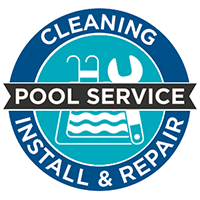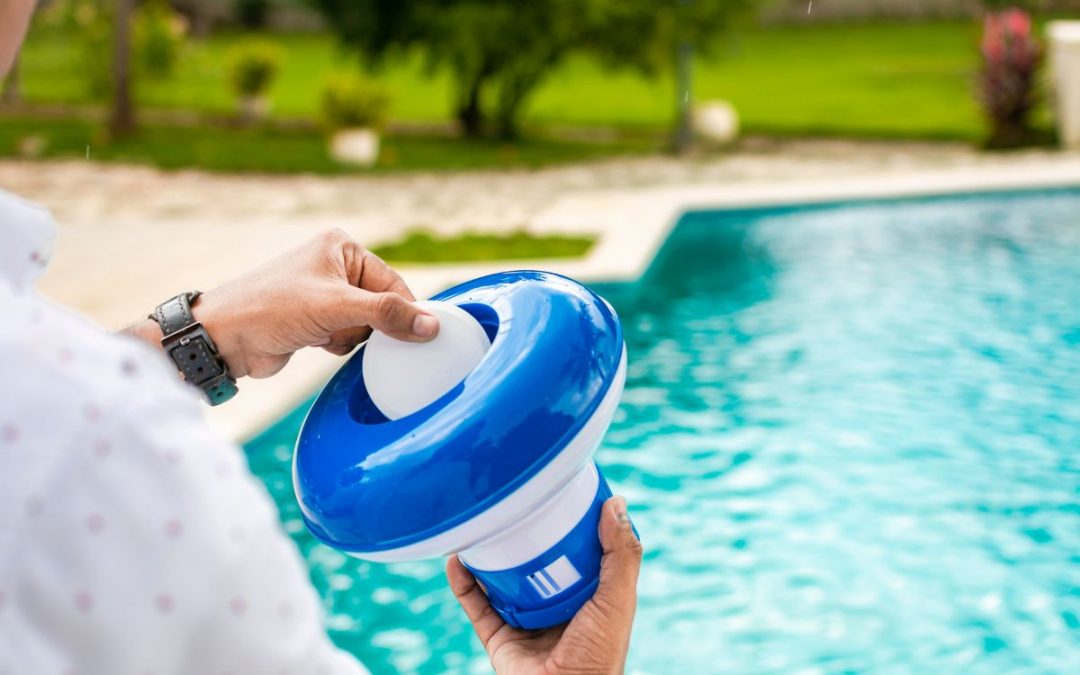It’s essential for pool owners to ensure that their backyard oasis is in the best possible shape no matter the season. Whether you’re an experienced pool owner, or just getting started, it’s never too late to ensure your pool is in top shape. With a few simple DIY pool maintenance tips, you can easily keep your pool in great condition all year round! So keep reading to learn more about these tips and make the most of your swimming pool.
DIY Pool Maintenance Tips
What Is DIY Pool Maintenance?
Swimming pools are a great way to spend time with family, and friends, or just to have some alone time in the water. But to make sure that our pools remain in top shape and safe for use, it’s important to practice a regular maintenance routine. And DIY pool maintenance is the easiest and most affordable way to keep your pool in good condition.
DIY pool maintenance involves tasks like regularly testing and treating the pool water, cleaning the pool and its surroundings, as well as inspecting and repairing any damaged components. It’s also important to regularly check and adjust the pool’s chemistry to ensure that the water is safe and enjoyable. And with just a few easy steps and minimal supplies, you can keep your pool looking and running great all year long.
By taking on your own DIY pool maintenance routine, you’ll save yourself time and money, while ensuring that your pool is a safe and healthy place to enjoy. Furthermore, it’s a great opportunity to bond with family and friends while making sure your pool stays at its best.
So the next time you’re thinking of taking a refreshing dip in the pool, remember these simple steps of DIY pool maintenance and you’ll have a clean and healthy pool in no time! Now let’s take a look at the following pool maintenance tips that you can do at home.
Maintain The Chemistry Of Your Pool For A Top-Notch Dip
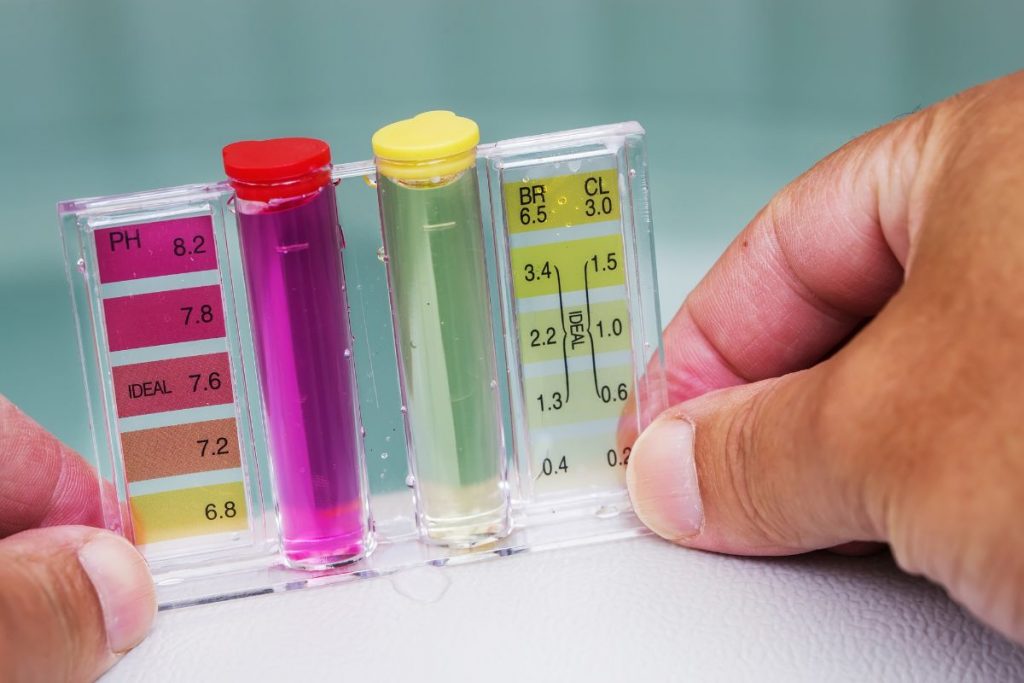
It’s easy to forget about the chemical balance when you’re enjoying a dip in the pool – but without proper pool maintenance, you could be sacrificing safety and quality. With the right knowledge and a few simple steps, you can keep your pool water in perfect condition. Testing and balancing pool water chemistry is key to achieving this.
Do-it-yourself pool maintenance starts with understanding the key elements that affect the balance of your pool water – the pH, alkalinity, calcium hardness, and chlorine levels. The goal is to keep all of these elements in their optimal ranges. To make things easier, test strips are available at most pool supply stores to measure your pool’s chemical levels.
Test strips essentially take the guesswork out of assessing your pool’s chemistry. All you need to do is dip them into the pool water, remove them, compare the color on the test strip to the color chart, and make the necessary adjustments. Additionally, pool test kits will allow you to test both your chemicals and the pH level of your pool in just a few minutes.
By testing your pool water regularly, you can make sure all elements of your pool’s chemistry stay in balance. This ensures that your pool is safe and free from contaminants. It also helps avoid costly repairs due to major chemical imbalances. So make sure to keep an eye on your pool’s chemistry – it’s the only way to guarantee a top-notch dip!
Clean And Maintain The Pool Filter
Keeping your swimming pool in top shape doesn’t have to be a difficult task. With the right DIY pool maintenance tips, you can easily keep your pool clean and clear without breaking the bank. An essential part of this is making sure your pool filter is in good condition. Here are some easy steps to ensure your pool filter stays in top shape:
- Clean the filter cartridge regularly. The cartridge filter should be removed from the filter housing, disassembled, and cleaned at least once per month. An easy way to do this is to use a garden hose with a spray nozzle to wash away dirt and debris.
- Backwash the filter periodically. This process involves reversing the flow of water through the filter to flush out any dirt that has accumulated. Backwashing should be done every few weeks depending on the amount of debris in your pool.
- Check the filter for any holes or cracks. It’s important to check your filter for any holes or cracks that may be causing it to act inefficiently. If there are any signs of wear and tear, replace the filter cartridge immediately.
Take Care Of Your Pool’s Pump And Motors For DIY Pool Maintenance
When it comes to maintaining your own pool, a fundamental part of the process is checking up on your pool pump and motors. Pool pumps are used to generate circulation throughout the pool, filtering the water and keeping it clean. Keeping your pool pump in good condition can extend the life of the pool itself, making it a worthwhile task to invest in.
Checking the pool pump can be an easy and quick process, but it is important to be mindful of the different components involved. The motor and impeller must both be checked to ensure they are operational and free of debris. Generally, the motor should be checked at least twice a year to ensure it is running efficiently. If the motor or impeller is not functioning properly, it could need to be replaced.
It is also important to inspect the strainers and filter housing to ensure they are free of any dirt, leaves, or other debris that may be blocking up the system. By taking the time to check your pool pump and motors as part of regular DIY pool maintenance, you can rest assured that your pool will remain in top shape for years to come.
Stay Ahead Of Pool Leaks And Damage With DIY Pool Maintenance
When it comes to keeping your pool in top shape, checking for signs of leaks and damage is an essential step. Whether you have an above-ground or in-ground pool, regular maintenance and inspection are key to extending its life and keeping it looking great. Here are our top DIY pool maintenance tips for identifying leaks and damage before it’s too late:
- Check the sides and bottom of your pool for any visible signs of wear and tear. Look out for signs of cracking, ponding, bulging, and erosion. Any of these subtle indicators can be a sign that the integrity of your pool has been compromised.
- Listen for telltale signs of water loss. If your pool is losing water from a leak, you may be able to hear it. Listen closely for a slight hissing sound close to the walls and bottom of the pool.
- Keep an eye on the water level. Unexplained drops in your pool’s water levels could indicate a slow leak. If the water levels continue to drop, it’s time to call in a professional to inspect the area.
- Monitor the chemical levels of your pool. Unexpected fluctuations in the chemical levels in your pool can be one of the earliest indicators of a leak. If you notice that the chemicals are not staying balanced, check the pool’s main drain to ensure its tightness.
Clean The Walls And Floor Of The Pool
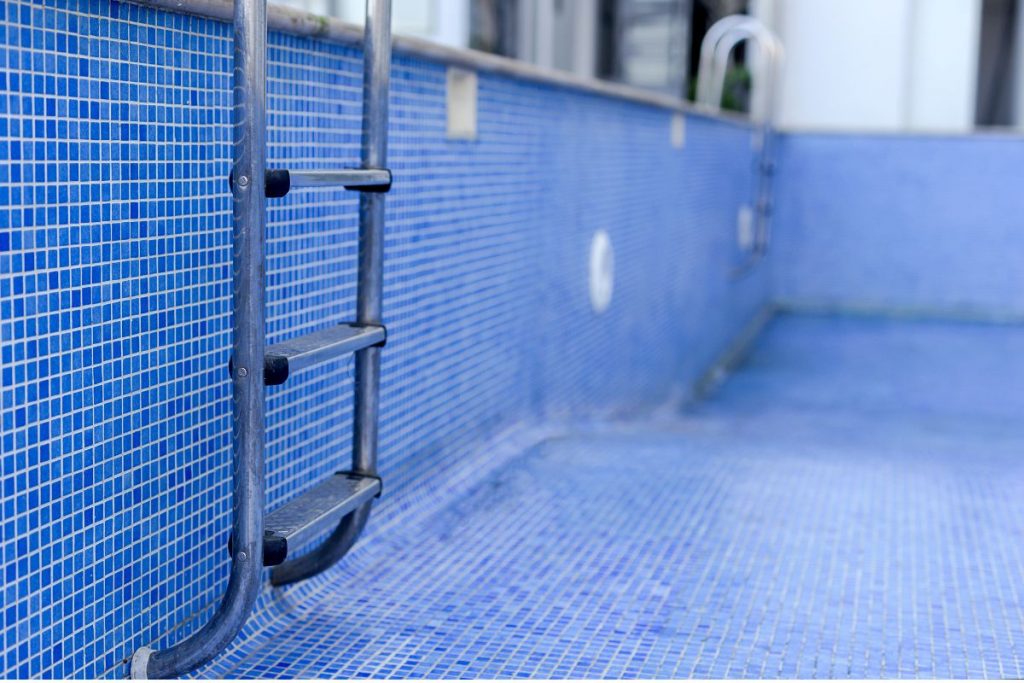
Another step to keeping your pool great is to clean the walls and floor of the pool. Cleaning the walls and floor of your pool is essential for eliminating debris and leaves, preventing algae growth, and restoring the clarity of the water. Regular vacuuming and brushing of the walls and floors will help you keep them clean and free from any dirt or grime. You can also use a pool brush or a vacuum to help keep the walls and floors of your pool in top shape. Additionally, you should test the pH and alkalinity levels of the pool regularly to make sure the water is safe for swimming.
Maintain Perfect Pool Tiles And Skimmer
When it comes to pool maintenance, one of the most important steps in keeping your pool in top shape is to keep your pool tiles and skimmer clean. By doing this, you’ll ensure your pool remains beautiful and inviting. With these DIY pool maintenance tips, it’s easy to maintain the perfect look of your pool tiles and skimmer with minimal effort.
First, be sure to use an appropriate cleaner that won’t damage your pool tiles or skimmer. It’s important to have a good scrubber brush as well as a large container of water to help clean the grime that builds up on your pool tiles and skimmer. Be sure to scrub the areas thoroughly – if you’re trying to avoid some elbow grease, you can always opt for a chemical-free cleaning product.
Once your pool tiles and skimmer are clean, it’s important to use a sealant or wax to protect them from future build-up of dirt or grime. This will also help extend the life of your pool tiles and skimmer. A good sealant or wax should be applied to your pool tiles and skimmer every 6 months to keep them looking like new.
Keep Your Pool Clear Of Debris With Simple DIY Pool Maintenance Tips
DIY pool maintenance is key to keeping a safe and enjoyable swimming environment. One essential part of pool maintenance is clearing debris from the pool. Leftover leaves, bugs, and dirt on the surface of the water can cause an unhygienic pool and make it less than ideal for swimming.
To start, equip yourself with the right tools for the job. A skimmer net allows you to easily scoop out leaves and other large debris from the surface of the pool, while a brush is useful for scrubbing the edges and removing dirt from the walls and stairs. You may also find a vacuum cleaner helpful for those harder-to-reach spots.
Once you have the supplies, you can begin cleaning your pool. Start by skimming the top of the pool with the net, removing any floating debris. Then use the brush to scrub the sides, stairs, and bottom of the pool. Vacuuming the entire pool is also recommended to remove dirt or sediment that has accumulated over time.
Finally, use a chlorine tablet or shock treatment to clean and sanitize the pool. Chlorine tablets provide a safe, easy way to balance the pH and chlorine levels in the pool. Shock treatments are also available and are great for killing bacteria and other contaminants.
Keep Your Pool Looking Great With Clean And Shiny Decking
DIY pool maintenance doesn’t have to be a tedious chore. And cleaning the deck around your pool is one of the easiest ways to maintain its beauty and function, and can actually be a fun project for the whole family. First, you’ll need to move furniture and other objects away from the pool area, and then use a broom or power washer to remove dirt, dust, and debris from the deck. Different types of decks will require different cleaning solutions, so make sure you know what type of decking you have before picking the right cleaner. Once you apply the cleaner, let it set for a few minutes to give it time to work, and then rinse.
Taking Care Of Your Pool Can Be Easy With These DIY Pool Maintenance Tips
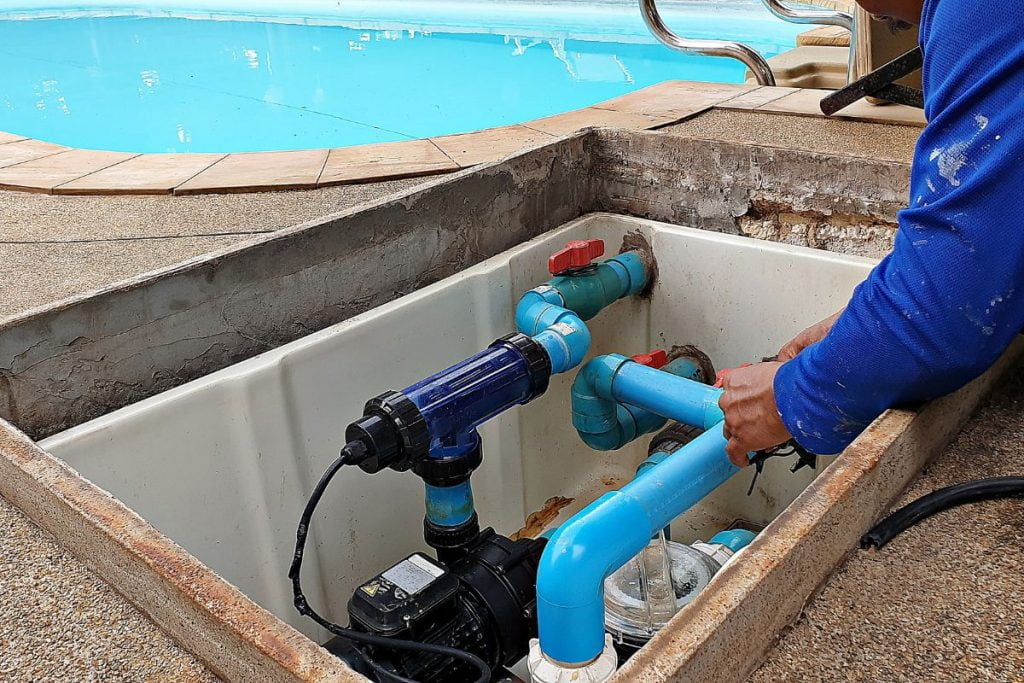
It’s easy to take care of your pool with the right knowledge and supplies. Now that you have some great DIY pool maintenance tips, you can make sure your pool stays in top shape. Taking the time to maintain your pool regularly will help you save money in the long run and enjoy a beautiful pool all summer long! With these tips, you can take the reins when it comes to caring for your pool and reap the rewards of a perfect dip in the pool all season.
Clear Water Pools of Atlanta has a team of knowledgeable professionals who can help you keep your pool in perfect condition. Whether you need advice on cleaning solutions, repairs, or replacements, our team of certified pool technicians is available to answer all of your questions and provide the right services for your swimming pool. But if you have no time for some DIY pool maintenance, Clear Water Pools is always here to help. This way, you can be sure that your pool will look and run its best all season. So don’t wait any longer! Get a free pool estimate today!

